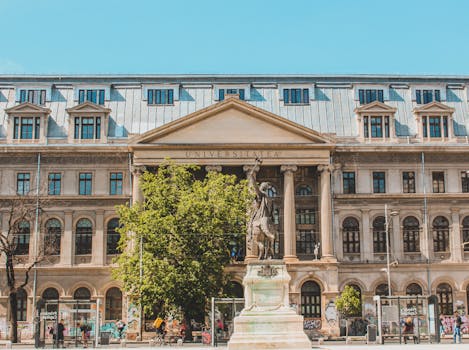
Traveling Through Time: How Europe’s Historical Heritage Shapes Modern Lifestyles in 2025
Traveling Through Time: How Europe’s Historical Heritage Shapes Modern Lifestyles in 2025. Europe, a continent steeped in history and tradition, has a unique ability to blend its rich heritage with modern lifestyles. From the cobblestone streets of Rome to the trendy cafes of Berlin, Europe’s historical heritage continues to shape the way people live, work, and interact with one another. In this article, we’ll explore the ways in which Europe’s past informs its present, and how this blend of old and new creates a distinct and fascinating cultural landscape.
Architecture and Urban Planning
One of the most visible ways in which Europe’s historical heritage shapes modern lifestyles is through its architecture and urban planning. Many European cities have preserved their historic centers, with narrow streets, grand piazzas, and iconic landmarks like the Eiffel Tower or Big Ben. These areas are not only popular tourist destinations but also thriving hubs of activity, with locals and visitors alike enjoying the unique atmosphere and charm of these historic neighborhoods.
At the same time, modern architecture and urban planning have also had a significant impact on European cities. The use of sustainable materials, green spaces, and innovative design has transformed the way people live and work in urban areas. For example, the sustainable district of Vauban in Freiburg, Germany, is a model of modern urban planning, with energy-efficient buildings, green roofs, and a strong focus on community and social interaction.
Art and Culture
Europe’s historical heritage has also had a profound impact on its art and culture. From the masterpieces of the Renaissance to the avant-garde movements of the 20th century, European art has always been characterized by its diversity, innovation, and creativity. Today, this legacy continues to inspire artists, musicians, and writers, with many European cities hosting world-class museums, galleries, and festivals.
For example, the Uffizi Gallery in Florence, Italy, is one of the world’s oldest and most famous museums, with a collection of Renaissance art that includes works by Botticelli, Michelangelo, and Leonardo da Vinci. Similarly, the Louvre in Paris, France, is home to an impressive collection of art and artifacts from around the world, including the Mona Lisa, the Venus de Milo, and the Winged Victory.
Cuisine and Gastronomy
Another area in which Europe’s historical heritage has a significant impact is cuisine and gastronomy. European cuisine is renowned for its diversity and richness, with each country and region having its own unique culinary traditions and specialties. From the pasta dishes of Italy to the seafood stews of Portugal, European cuisine is a reflection of the continent’s history, culture, and geography.
At the same time, modern European cuisine has also been influenced by other cultures and traditions, with many restaurants and chefs incorporating international flavors and ingredients into their dishes. For example, the popularity of sushi and other Asian cuisine in European cities like London and Paris reflects the growing diversity and cosmopolitanism of European culture.
Conclusion
In conclusion, Europe’s historical heritage continues to shape modern lifestyles in 2025, from architecture and urban planning to art and culture, cuisine and gastronomy. By preserving its historic centers, promoting sustainable urban planning, and fostering artistic and cultural innovation, Europe is able to blend its rich past with its vibrant present, creating a unique and fascinating cultural landscape that is unlike anywhere else in the world.






